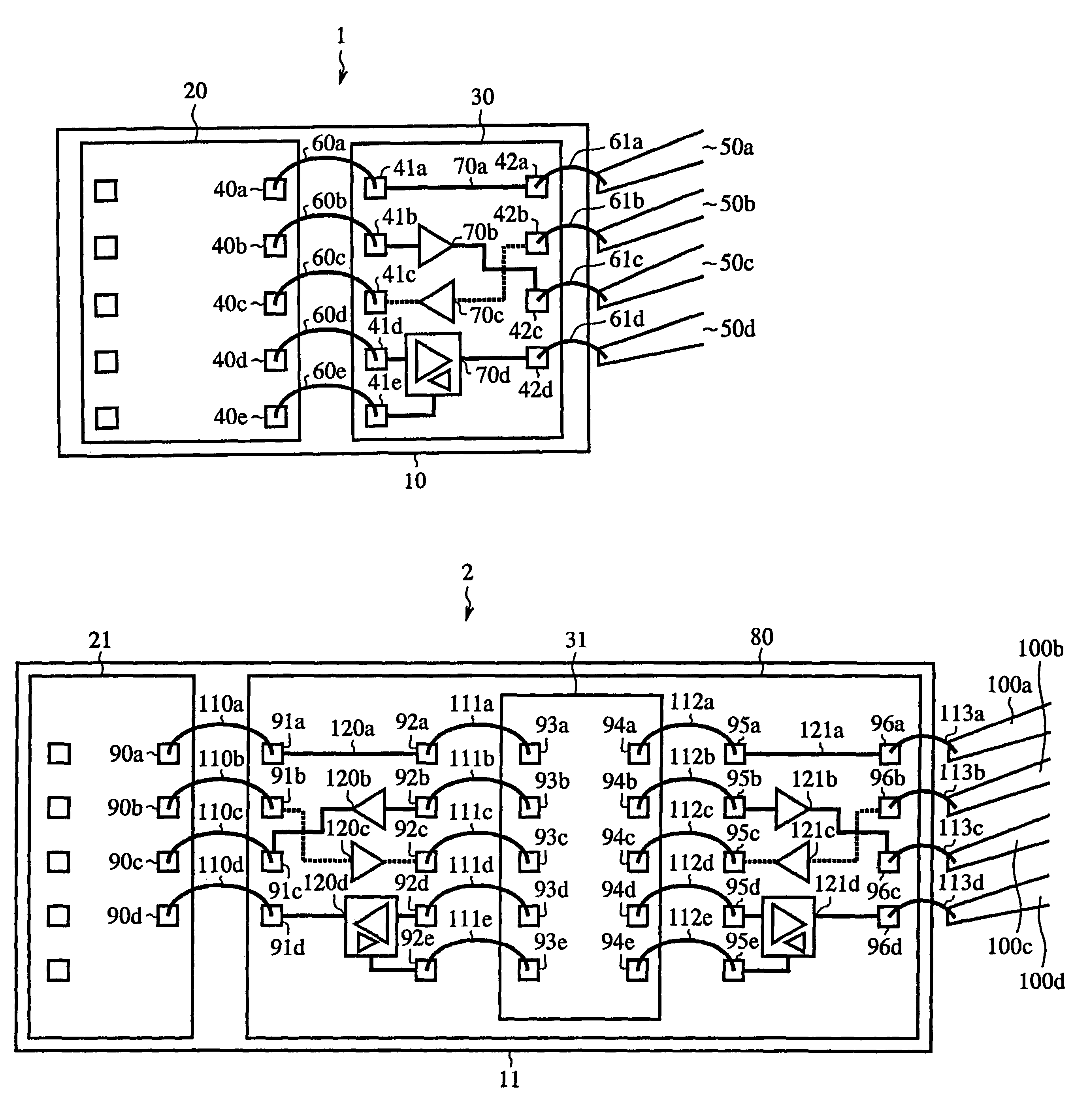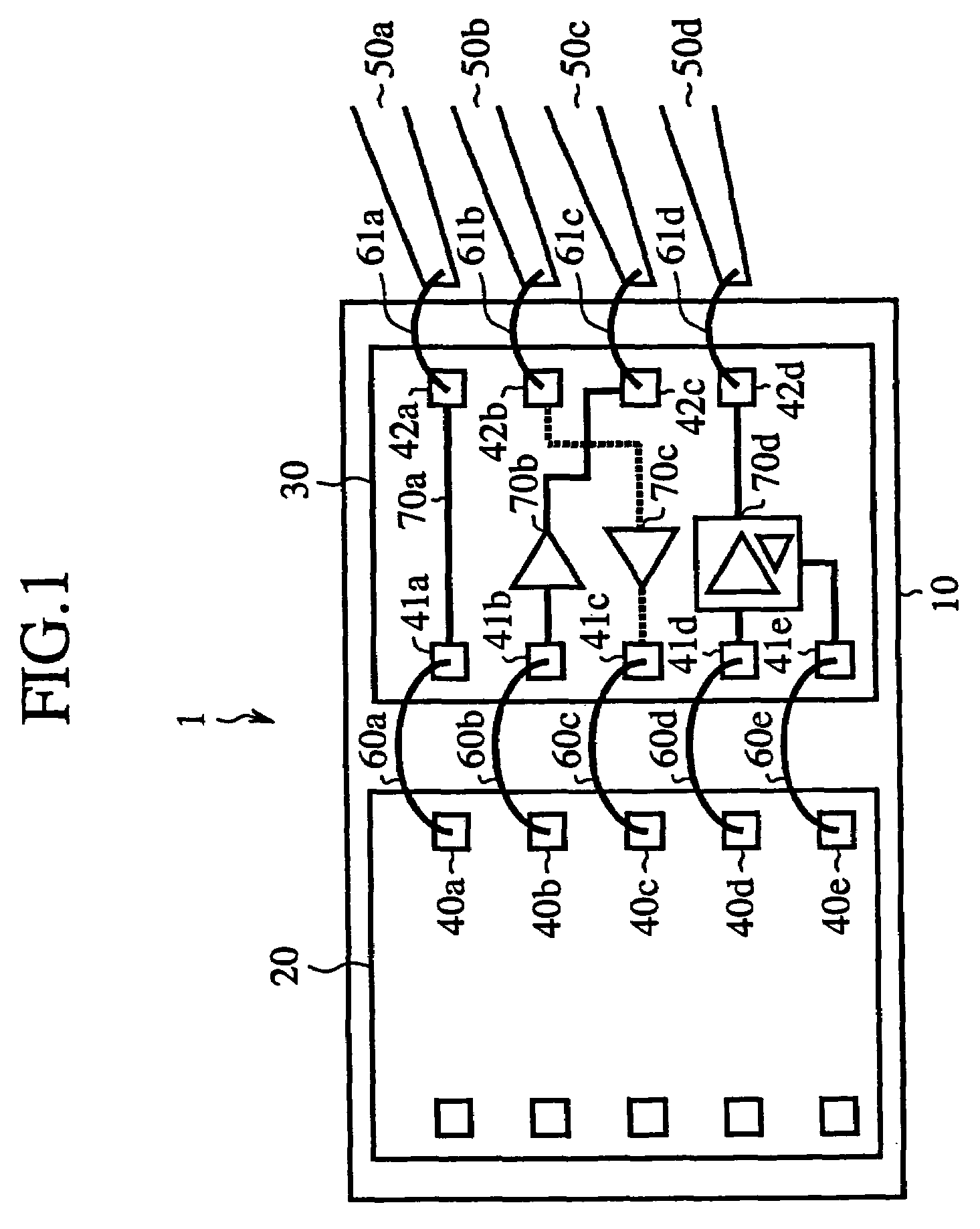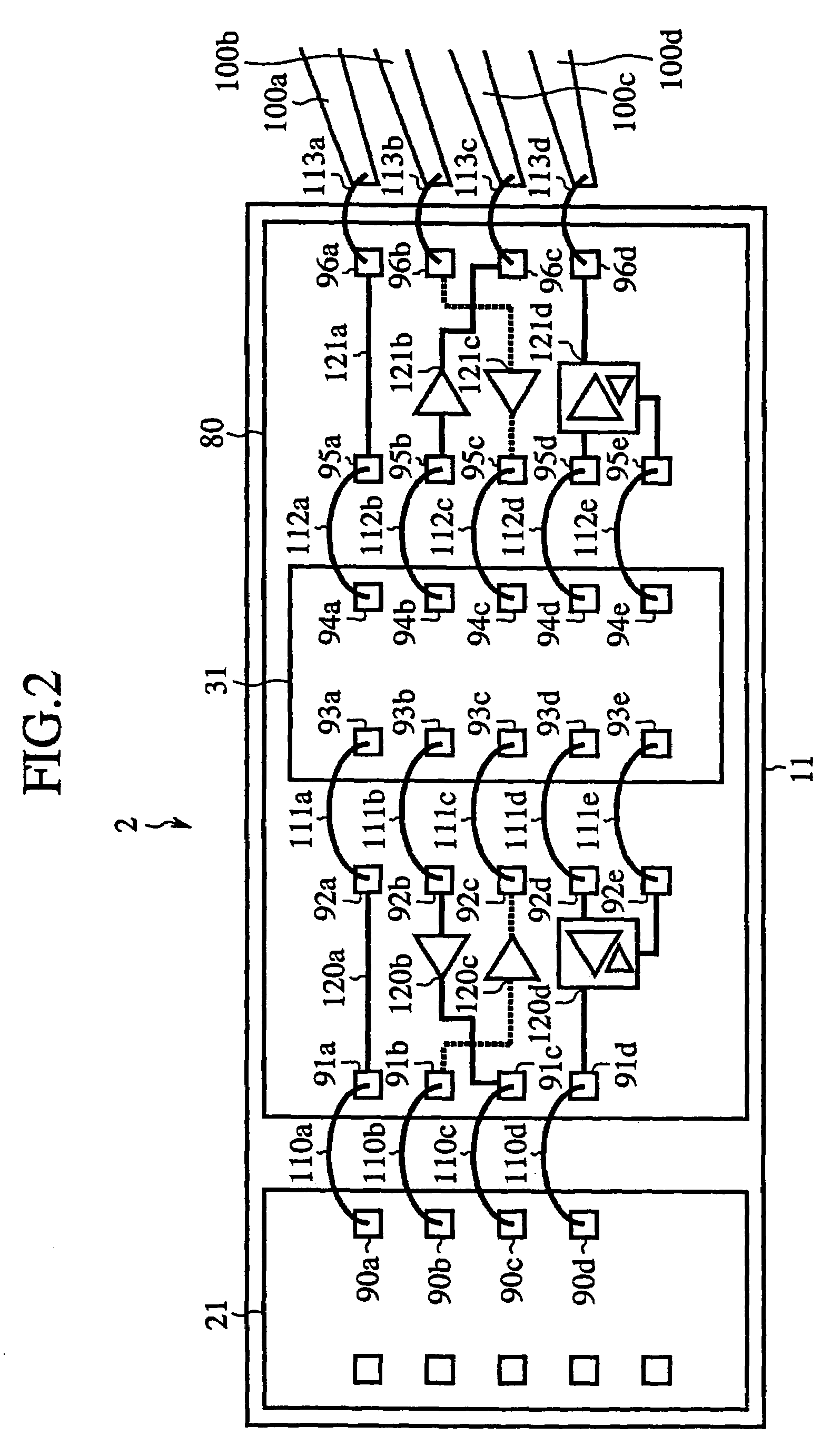Semiconductor integrated circuit device
a technology of integrated circuits and semiconductors, applied in the direction of solid-state devices, pulse techniques, basic electric elements, etc., can solve the problems of interfering with the reduction of chip size, and influence of temperature, so as to reduce the size of the semiconductor integrated circuit chip
- Summary
- Abstract
- Description
- Claims
- Application Information
AI Technical Summary
Benefits of technology
Problems solved by technology
Method used
Image
Examples
first embodiment
[0049]FIG. 1 is a plan view showing a semiconductor integrated circuit device according to a first embodiment of the present invention. In FIG. 1, reference numeral 1 indicates a semiconductor integrated circuit device. Reference numeral 10 indicates a bonding pad (bonding PAD), reference numeral 20 indicates a semiconductor integrated circuit chip A (Chip. A) disposed on the bonding PAD 10, and reference numeral 30 indicates a semiconductor integrated circuit chip B (Chip B) including interface functions (I / F functions), which is disposed on the bonding PAD 10, respectively. Reference numerals 40a–40e indicate pads (PADs) of the Chip A20, and reference numerals 41a–41e and 42a–42d indicate pads (PADs) of the Chip B30, respectively. Reference numerals 50a–50d indicate leads (LEADs) disposed around arrays of the Chip A20 and Chip B30 disposed on the bonding PAD 10. Reference numerals 60a–60e and 61a–61d respectively indicate bonding wires. Reference numeral 70a indicates a wiring ele...
second embodiment
[0064]FIG. 2 is a plan view showing a semiconductor integrated circuit device according to a second embodiment of the present invention. In FIG. 2, reference numeral 2 indicates a semiconductor integrated circuit device. Reference numeral 11 indicates a bonding pad (bonding PAD), reference numeral 21 indicates a semiconductor integrated circuit chip A (Chip A) disposed on the bonding PAD 11, reference numeral 80 indicates a semiconductor integrated circuit chip (I / F Chip) including interface functions (I / F functions), which is disposed on the bonding PAD 11, and reference numeral 31 indicates a semiconductor integrated circuit chip (Chip B) disposed between portions where the I / F functions of the I / F chip80 are provided, respectively. Reference numerals 90a–90d indicate pads (PADs) of the Chip A21, reference numerals 91a–91d, 92a–92e, 95a–95e and 96a–96dindicate pads (PADs) of the I / F Chip80, and reference numerals 93a–93e and 94a–94e indicate pads (PADs) of the Chip B31, respective...
third embodiment
[0083]FIG. 3 is a plan view showing a semiconductor integrated circuit device according to a third embodiment of the present invention. FIG. 4 is a cross-sectional view taken along line IV—IV of FIG. 3, and FIG. 5 is a cross-sectional view taken along line V—V of FIG. 3, respectively. In FIG. 4, reference numeral 3 indicates a semiconductor integrated circuit device. Reference numeral 12 indicates a bonding pad (bonding PAD), reference numeral 22 indicates a semiconductor integrated circuit chip A (Chip A) disposed on the bonding PAD 12, reference numeral 81 indicates an I / F semiconductor integrated circuit chip (I / F Chip) including interface functions (I / F functions), which is disposed on the bonding PAD 12, reference numeral 32 indicates a semiconductor integrated circuit chip B (Chip B) disposed on the I / F chip 81, and reference numeral 130 indicates a height adjusting semiconductor integrated circuit chip (height adjustment Chip) including interface functions (I / F functions), wh...
PUM
 Login to View More
Login to View More Abstract
Description
Claims
Application Information
 Login to View More
Login to View More - R&D
- Intellectual Property
- Life Sciences
- Materials
- Tech Scout
- Unparalleled Data Quality
- Higher Quality Content
- 60% Fewer Hallucinations
Browse by: Latest US Patents, China's latest patents, Technical Efficacy Thesaurus, Application Domain, Technology Topic, Popular Technical Reports.
© 2025 PatSnap. All rights reserved.Legal|Privacy policy|Modern Slavery Act Transparency Statement|Sitemap|About US| Contact US: help@patsnap.com



